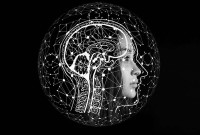- Home
- Business Processes
- Industry Knowledge
- Aerospace Industry
- Automotive Industry
- Banking Domain
- BFSI Industry
- Consumer/ FMCG Industry
- Chemicals Industry
- Engineering & Construction
- Energy Industry
- Education Domain
- Finance Domain
- Hospitality Domain
- Healthcare Industry
- Insurance Domain
- Retail Industry
- Travel and Tourism Domain
- Telecom Industry
- Leadership Skills
- eLearning
- Home
- Leadership
- Communication Skills
- Communication Skills
Communication Skills
Communication is defined as the process of meaningful interaction between two or more persons with a view to arriving at a common meaning and understanding. There are different types of communication and these are used on different occasions. In this section on communication skills, Technofunc will equip you with the skills most needed in today’s dynamic, demanding workplace.
Communication can be achieved through the use of language, written or spoken, and gestures. Each of these modes of communication has its own advantages and disadvantages. Communication may involve repeated interactions or negotiations of meaning and the addresser and the addressee play active roles in this process.
What is Communication?
The dictionary definition is 'to exchange (thoughts) or make known (information or feelings) by speech, writing or other means, to transmit'. We all engage in communication with others right from birth. When we interact with others we are communicating with them. Communication is more than just messaging or swapping information. It involves not just words, but the use of all our senses. With face-to-face dialogue, our facial expression, tone, body language, ability to listen with patience, all contribute to the conveying of messages and information between people. Now we live in an age of communication characterized by speed, efficiency, and the ability to transcend physical or geographical limitations. Being able to share information quickly between people has meant that a disaster in one part of the world can be responded to in another; it has led to the fall of corrupt governments, as people have been able to unite in challenging authoritarian regimes. People in remote areas fighting injustice have linked up with people on the other side of the world who can support their cause. As with everything, new technologies such as e-mail and text messaging have the potential to be positive or negative.
Importance of Communication Skills
Surveys of employers consistently show that communication skills are critical to effective job placement, performance, career advancement, and organizational success. In making hiring decisions, employers often rank communication skills among the most requested competencies. Most job advertisements specifically ask for excellent oral and written communication skills. When hiring senior roles, communication skills seem to be the single most important factor in arriving at hiring decisions.
Effective communication in business is as important as the blood circulating in the human body and hence managers do their best to overcome all barriers to communication. Communication skills are very important as you need to demonstrate that you can add value to the company beyond your technical qualifications. Communication skills generally mean reading, listening, nonverbal, speaking, and writing skills.
In this section, we will introduce you to some basic concepts in communication, its importance in business organizations, different types of communication, different modes to be used, and their comparative advantages and disadvantages. We shall also give you insights into strategies that are used for effective face-to-face and other business communication. Surveys of employers consistently show that communication skills are critical to effective job placement, performance, career advancement, and organizational success.
Communication Skills Must be Learned
You are not born with the ability to read, listen, speak, and write effectively. These skills must be learned. As human beings, we have the ability to express ourselves and share our thoughts and feelings in many ways. We could live in isolation, never communicating with another person, but that would not create value. We can keep feelings to ourselves or we can share them. Each person has his or her unique view of things, and each perspective is valuable. Through sharing these individual ideas or views with each other, global solutions may be found.
Good communication can be learned and improved. "It begins with good listening and preparedness to acknowledge the ideas, ideals, and ethics of others, while at the same time considering the adaptation of one's own to suit changing circumstances or because one has been shown that they are unacceptable to others." Listening effectively is more than just hearing the words of others. It involves concentrating all our energy on understanding and interpreting the message with the meaning the sender intended. It is not at all necessary to use difficult words, phrases, and terms to impress others. Rather it is how clearly we express our ideas and how simply we put forward our thoughts in which the essence of good communication lies.
Thriving in the demanding work world depends on many factors, and one of the most important factors is how well you communicate. Someone may share an idea that the other person may not have even considered.
The Process of Communication
Changes in today’s work environments include more than innovative technology, team management, and different work environments. The U.S. workforce is becoming increasingly diverse. New electronic technologies are dramatically affecting the way workers communicate. In our always-connected, everything-linked world, we exchange information and stay in touch by using e-mail, mobiles, text messaging, social media, computers, satellite communications, wireless networking, and even by “tweeting.” Through teleconferencing and videoconferencing, we can conduct meetings with associates around the world. The rapid development of social software such as weblogs, wikis, and peer-to-peer tools makes it easier for workers to communicate online and wirelessly almost instantaneously.
Communication is a central factor in the emerging knowledge economy and a major consideration for anyone entering today’s workforce, we need to look more closely at the total process of communication. Communication put simply is the transmission of information and meaning from one individual or group to another. The crucial element in this definition is meaning. Communication has as its central objective the transmission of meaning. The process of communication is successful only when the receiver understands an idea as the sender intended it. Given below are the elements of communication:
- Communication involves at least two persons the addresser and the addressee
- The topic of communication: the contents of the message to be transmitted
- The channel which is the medium through which the message travels, e.g. letter, telephone, e-mail, etc.
- The code is the language of the message e.g. English, French, Hindi, etc.
- The message form constituting of the selection of particular grammar and lexical choices of the message
Related Links
You May Also Like
-
Narrative leadership is interpreted as the leader who aspires to construct leadership by telling stories. Leadership is a task of persuasion, of winning people’s minds and hearts. Storytelling is thus inherently suited for the task of leadership. Learn about the narrative leadership style and how to use this style to inspire and motivate followers or to manage change.
-
Certain generally accepted truths or principles of communication are important to consider when communicating with others. These principles hold true for all people in every culture. By understanding these principles, you will experience greater communication effectiveness. An effective communication system is one that achieved its objectives. Communication is effective where there are no barriers to communication.
-
The best career choices are ones that match your values. Each person has several values that are important to him. These values are highly personal and knowing them provides a clearer sense of what's most important to you in your life and career. Career values are the beliefs you consider important from a work standpoint. Values help you understand what you want from a job? Explore a few examples of work values that can influence career path and job satisfaction.
-
Communication performs many functions, such as informing and generating awareness, educating, persuading, motivating, entertaining, etc. The functions of communication in an organization are to inform, persuade, and motivate. Employees need to have effective organizational communication in order to achieve excellent job performance. The communication between the top management and the employee needs to be effective for better work culture.
-
Thinking & Problem Solving Skills
Today's dynamic business world demands that you make decisions that significantly boost productivity and drive competitive advantage. But how do you know whether a decision will benefit the organization? And how do you know that the decisions are based on rational and statistical reasoning? Explore how to become a dynamic problem solver with the skills to make accurate decisions.
-
Have you ever noticed how we express ourselves or interact with each other? Have you ever wondered what communication is and what role it plays in our lives? One may wonder if communication is so omnipresent and integral to our lives, why study communication at all? We need to study communication because it is a complex process that consists of many elements and is also beset with a number of barriers and there is a need to remove the barriers so that the communication process is effective.
-
In the field of communication studies, there are numerous models. No one model is suitable for all purposes and all levels of analysis. Some common models are known as Lasswell Model, George Gerbner Model, David Berlo Model, Shanon and Weaver Model, Osgoods Model, and Schramm Model. All these describe the four components of the communication process, namely, the source (communicator), the message, the channel, the receiver (audience).
-
Communication is defined as the process of meaningful interaction between two or more persons with a view to arriving at a common meaning and understanding. There are different types of communication and these are used on different occasions. In this section on communication skills, Technofunc will equip you with the skills most needed in today’s dynamic, demanding workplace.
-
Process & Stages of Creativity
Creative ideas do not come just like that. There is a process to it. There are a number of techniques of creativity to support the generation of ideas but the widely practiced ones are brainstorming and lateral thinking. Most innovations are not so much the product of sudden insights as they are the result of a conscious process that often goes through multiple stages. The creative process can be divided into four stages of preparation, incubation, evaluation, and implementation.
-
Communication has as its central objective the transmission of meaning. The process of communication is successful only when the receiver understands an idea as the sender intended it. How does a message or an idea travel from one person to another? To transmit our message, we engage in a sensitive and complex process of communication, with different elements like sender, message, channels, receiver, noise, and feedback.
Explore Our Free Training Articles or
Sign Up to Start With Our eLearning Courses

About Us
Learning
© 2023 TechnoFunc, All Rights Reserved










